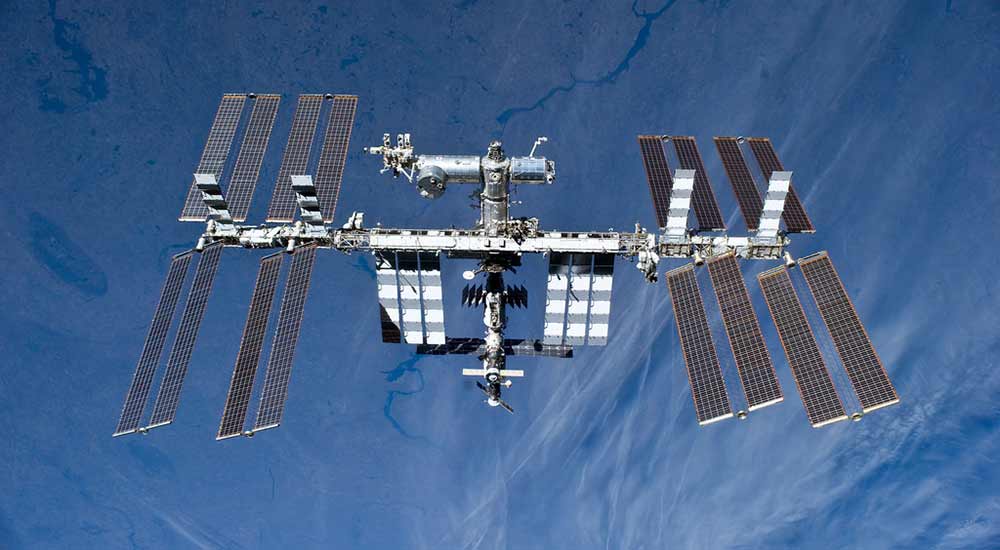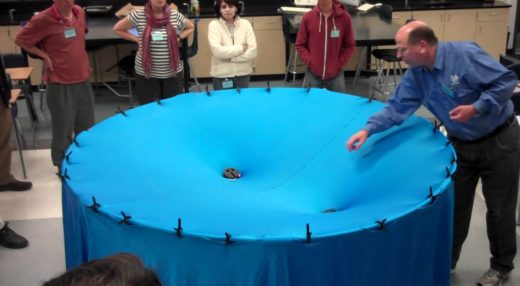What Are Zero Gravity and Microgravity, and What Are the Sources of Microgravity?

You might have heard the term ‘zero-g’ from most of the people when they talk about space and the International Space Station. By ‘zero-g’, they are technically referring to the weightless environment of the space station where there are no g-forces acting on it, which obviously does not mean that there is no gravity at all. Gravity is everywhere and it is impossible for anyone to find a spot in this universe without gravity. Indeed, our International Space Station, which is at 400 km above the surface of the earth experiences 89 to 90 percent of the gravitational pull.
The weightlessness
The weightless environment is created due to the free fall motion of the ISS around the earth. The orbital motion at a speed of 17.6 km/s around the planet makes the ISS to stay in a continuous free fall and not hit the surface and this creates the overall weightless environment with no other forces acting on them, except gravity.
What is a g-force and how is it different from gravity?
A basic definition of g-force is that it is a measure of acceleration that governs your weight on this planet. For example, when you are sitting at your home, you are experiencing 1 g. Which means that you are not accelerating towards the center of earth, as the ground stops you from doing that by exerting an equal reaction force on you. The ratio of these two forces is the g-force and its one. Let’s go a little deep.
Assume that you weigh 80 kg on Earth.
This means that the force acting on you due to gravity is your weight times the acceleration due to gravity.
\(F = m\times a \\[10pt]\)
\(F (due\:to\:gravity) = 80\:kg\times9.81\:m/s^2\\[10pt]\)
The normal reaction force exerted on you by the ground through the chair you are sitting should exactly be the same, as you are not accelerating now.
\(F (normal) = F(due\:to\:gravity)\\[10pt]\)
\(g\:(g-force) = \large \frac{F(normal)}{F (due\:to\:gravity)} = \frac{m(g+a)}{mg} \\[10pt]\)
\(g-force = \large \frac{80 \times(9.81+0)}{ 80\times9.81} = 1\:g\\[10pt]\)
Hence, you experience 1 g.
Now you can better explain g force as the ratio of the vector sum of the non-gravitational forces acting on a body to the force acting on it due to gravity in a free fall.
Now apply the same theory for when you are on a plane doing fast maneuvers or in an accelerating car. You would experience more non-gravitational reaction forces acting up on you, due to the acceleration. Any positive g forces above one means, you will be feeling heavier than usual.
Free fall
Now apply the theory for when you are in a free-fall (in vacuum). You would not have any of the non-gravitational forces acting on you that would give you a weight.
\(g\:(g-force) = \large \frac {0}{F (due\:to\:gravity)} = 0 \\[10pt]\)
Therefore, in a free fall, you would always experience a zero-g or zero g-force.
Microgravity
The term ‘Microgravity’ itself is a more confusing term here. The less confusing term is ‘micro-g’ or ‘micro g-forces’. Micro-g could be defined as a very little amount of g-forces experienced by an object in free fall due to some non-gravitational forces acting on them.
However, we have also seen that, in a free fall, any object is said to experience no g-force at all. So why does the ISS, which is in a continuous free fall experience micro g-forces?
Sources of Microgravity
Well, it is not in a perfect vacuum, is it? The ISS is not completely out of our atmosphere. It is just 400 km above us in the thermosphere and it does experience a little air drag in the orbit, which is significant enough to contribute micro g-forces. The reason is the ISS is 72.8 m in width and 108.5 m in length and with those huge solar panel arrays, it is quite normal for that small drag coefficient. Besides this, the other sources of microgravity are the tidal forces. As the ISS is quite big in size, the attenuation in the gravity creates a gravity gradient along its length, resulting in micro g-forces due to the tidal force acting on it. The centrifugal force is also another type of tidal force acting on the ISS due to its significant width and the orbit around the earth. Further deeper, the objects floating inside the ISS itself contribute a little more to the g-forces.
Even though the ISS use their thrusters often to counter these forces and try to reduce these g-forces, there will always be some micro g-forces acting on it, as these factors does vary from time to time and are unpredictable.
This post was first published on August 17, 2015.











Question please. Assuming I am lying on my back flat and that is am at 1 g, what would be the g force if I elevated my legs and feet by 1 foot? Would that not change the g force since my blood would now be working toward my heart instead of neutral taking the pumping of the veins and arteries as the same on both?
Thank you for your response.
Thank you for a good explanation, Karthikeyan. You have clearly explained what my school teacher failed to.
Great explain! All the flat earthers should read this up!
Concise and simple. I prefer these kind of explanations. Thank you.
“Any positive g forces above one means, you will be feeling heavier than usual.”
To anyone feeling confused about + and – gforces.
Imagine this from the frame of a fighter pilot. Jet climbing – Positive gforce! Jet diving – Negative gforce!
Thank you, kind stranger. Appreciate your help. :)
Came from Science Hook! This is well explained and consistent enough. Keep writing! Good luck! I have also sent you a feedback through your email form. Hope it helps.
Thank you for you kind words Joel :)
Beautifully explained. Thanks!